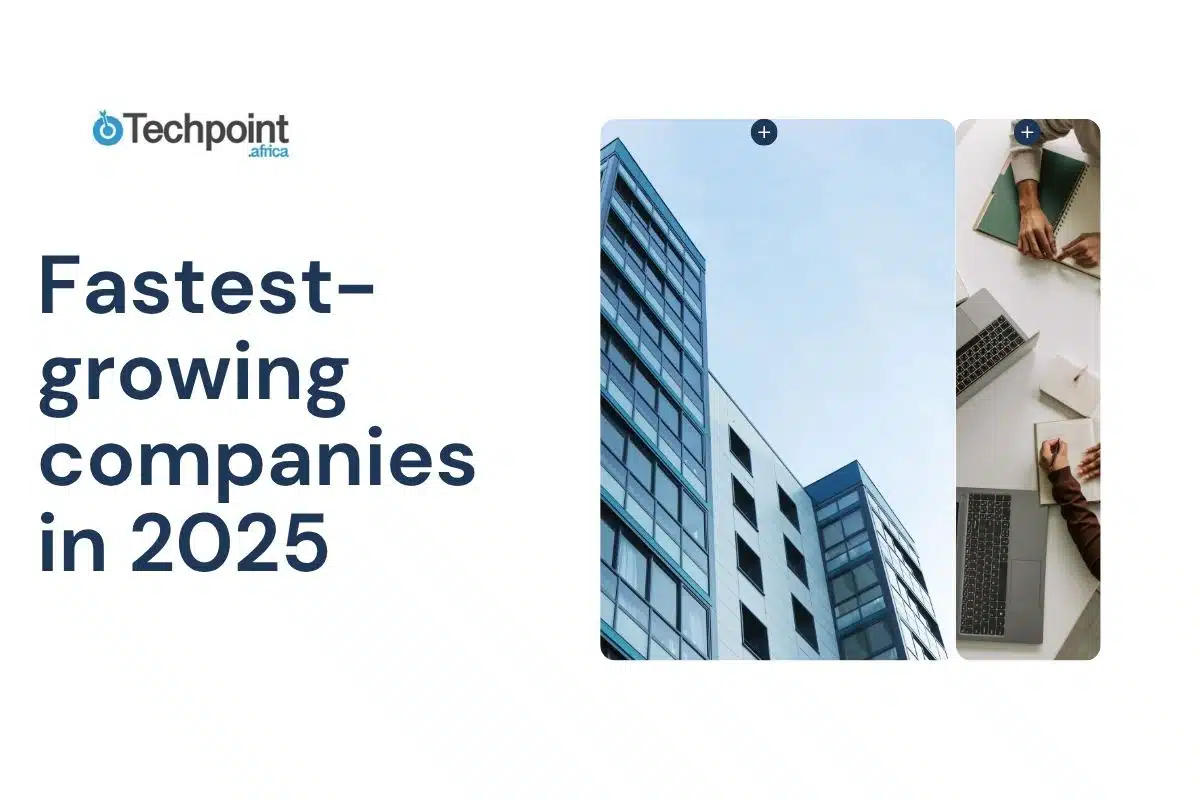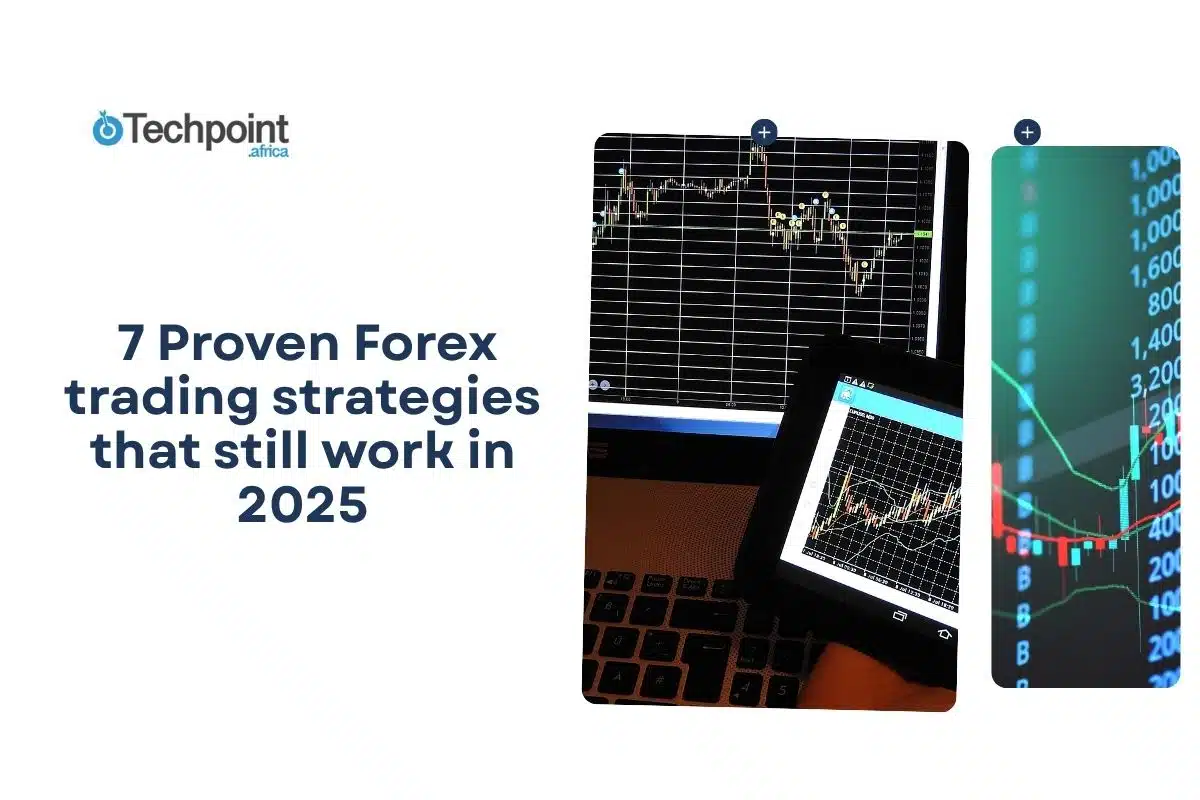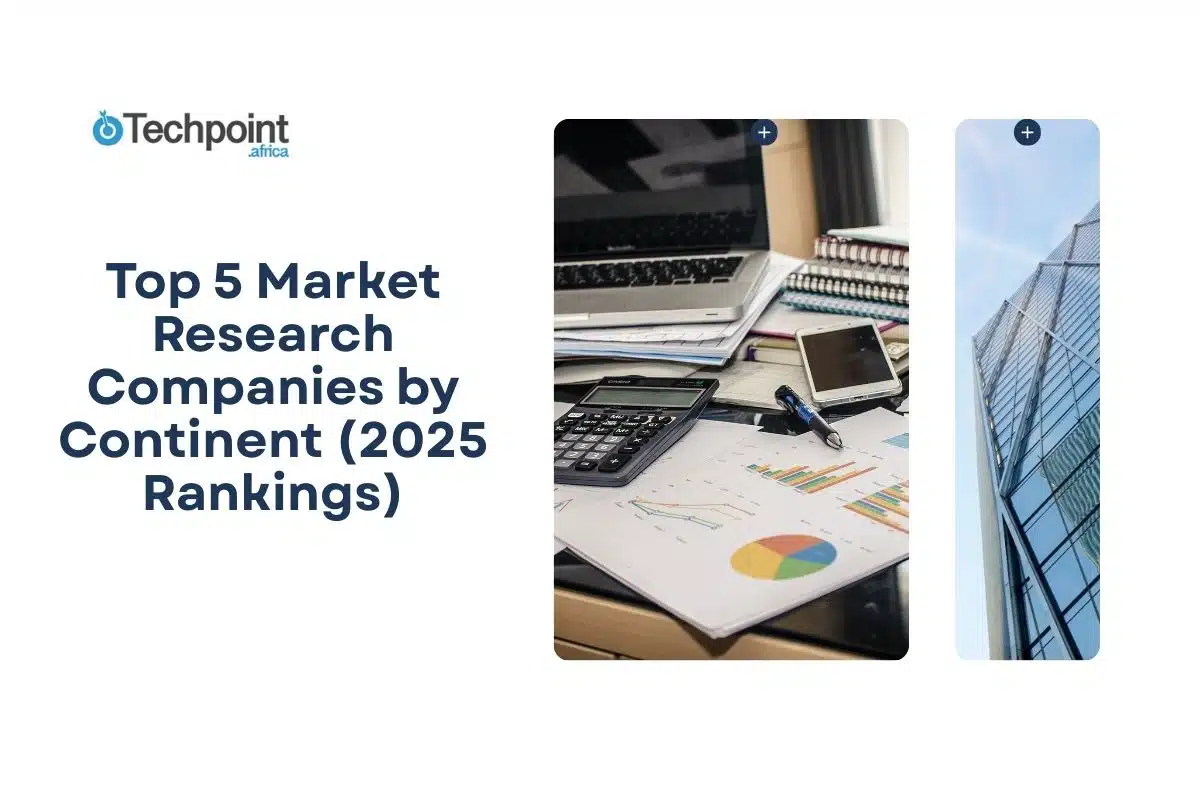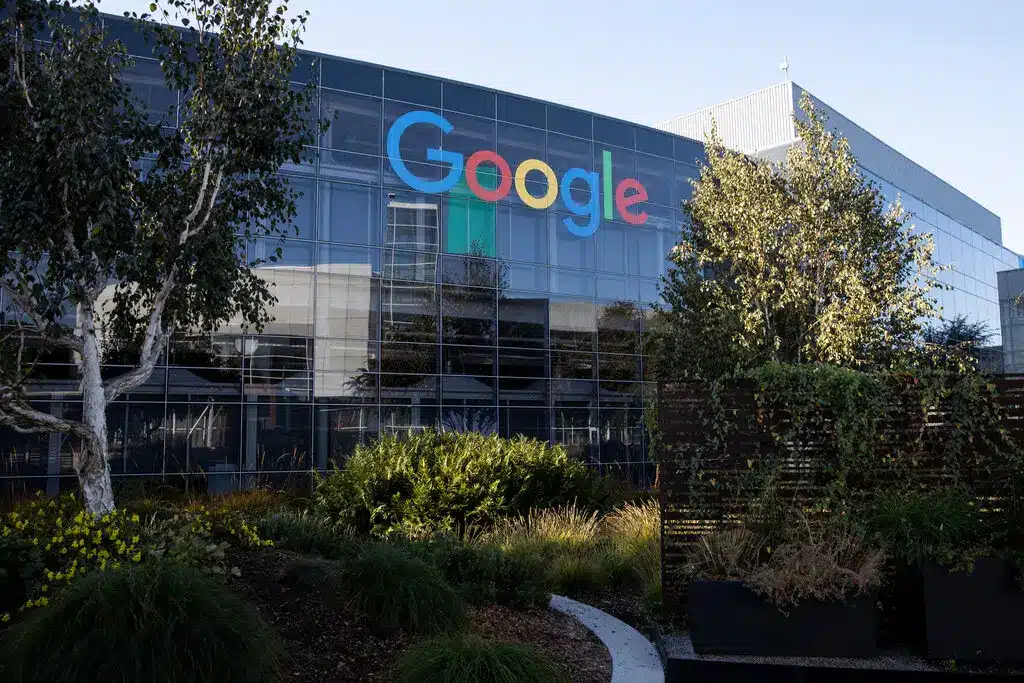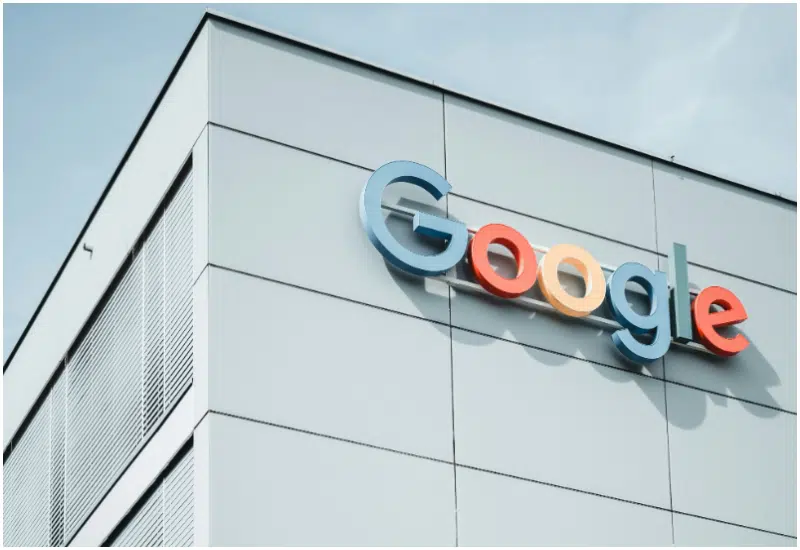When I first got this assignment, my mind went straight to the usual names—Apple, Google, Microsoft. We all know they’re massive and everywhere. But instead of repeating what we already know, I figured this was the perfect time to focus on the companies that are rising fast but might not be on your radar yet.
I started with a basic question: “Who’s actually winning in 2025?” That led to hours of scrolling through financial reports, app rankings, hiring updates, and even Reddit deep dives. The more I looked, the more it became clear—this isn’t about one metric. It’s about who’s showing real momentum from every angle.
Some of these companies are raising huge rounds. Others are quietly exploding in user numbers. A few are already familiar, but most are just getting started—and growing fast. In this piece, I’ll break down the ones worth watching, not just for what they do, but for how fast they’re becoming part of the conversation.
TL;DR: Key takeaways from this article
- The fastest-growing companies are scaling across revenue, brand value, users, hiring, and search visibility.
- AI, SaaS, and commerce are at the forefront. These aren’t just buzzwords; it’s about real companies solving real problems with smarter stacks.
- Bootstrapped companies are thriving too. A few self-funded companies are quietly dominating their niches, no VC required.
- Clear positioning beats clever gimmicks. Beyond building good products, the breakout brands tell sharp, simple stories.
- Growth that lasts is intentional, not viral. The most successful companies are thinking long-term and optimizing for compounding wins.
- You don’t need to be everywhere, just right for someone. Niche, focused tools are gaining more traction than bloated platforms.
Here’s what I looked at
I went looking for the fastest-growing players in 2025, and I wanted the numbers to back it up.
So, what did I track?
The tools I used
To keep things honest (and nerdy), I pulled data from:
- Brand Finance for brand value growth data.
- Crunchbase for funding rounds and valuation shifts.
- PitchBook for private market insights.
- Ahrefs, Similarweb, and Exploding Topics for search traffic and digital engagement trends.
- LinkedIn data to track hiring velocity and team growth.
- Google Trends to gauge search interest and breakout terms.
Timeframe tracked
May 2023 to May 2025, a full 24 months of movement. Enough to spot a breakout, not just a momentary blip.
Metrics I tracked
Here’s what I considered, not in isolation, but how they stack together:
- Revenue growth (YoY or quarterly jumps).
- User or customer growth.
- Funding raised (but not always a positive signal; context matters).
- Web traffic and app installs.
- Social and search visibility (who’s getting Googled, tweeted, and talked about).
Some companies crushed it on one front. The best are growing on multiple fronts: fast, consistently, and visibly.
Fastest-growing companies by every metric
Growth is one of those words that gets thrown around a lot. But not all growth is created equal. So, instead of lumping everyone into a vague top-10 list, I broke things down a bit more intentionally.
I categorized the fastest-growing companies into three buckets based on how their momentum shows up in the real world:
- Brand value growth: Who’s becoming more valuable in the eyes of customers, investors, and culture?
- 5-Year search growth: Who has gone from under-the-radar to everywhere on Google in the last five years?
- Startup search growth: Who are the scrappy up-and-comers generating serious search heat?
Let’s start with the first one.
Top 10 fastest-growing companies by brand value growth rate
Brand Finance released a report in 2025, highlighting 10 companies that achieved remarkable brand value growth. These organizations not only expanded their financial metrics but also enhanced their cultural impact, user engagement, and market visibility.
1. e& (701% brand value growth)
| Country | United Arab Emirates |
| Headquarters | Abu Dhabi |
| Year founded | 1976 |
| Brand value | $15.3 billion |
| Brand Strength Index (BSI) Score | 84.6/100 |
Formerly known as Etisalat, e& is s a multinational technology and investment firm. With business arms spanning telecommunications, fintech, entertainment, AI solutions, enterprise solutions, and digital services across 38 countries, the UAE-based company is positioning itself as the digital enabler of the Middle East and beyond. In 2022, it rebranded to “e&” to reflect this ambitious pivot, and in 2025, the results are finally showing.
Why are they growing?
The simple answer is brand consolidation. The group unified all its operations under the e& identity, including its telecom services under Etisalat by e&, which massively increased brand clarity and recognition. The group also doubled down on global tech investment, regional partnerships, and AI-powered infrastructure. Their dual brand strategy kept local trust while pursuing global expansion.
Takeaway for marketers and founders
e&’s rebranding showcases the power of aligning legacy with innovation. For marketers and investors, it emphasizes the importance of cohesive brand identity and strategic partnerships in driving exponential growth.
The company’s strategic storytelling and identity clarity also stands out. For creators, marketers, and even small startups, the lesson is this: sometimes, how you tell your story is just as powerful as what you’re selling. If your brand’s evolving, don’t be afraid to reintroduce yourself boldly.
2. Nvidia (98% brand value growth)
| Country | United States |
| HQ | Santa Clara, California |
| Year founded | 1993 |
| Brand value | $87.9 billion |
| BSI score | 88.9 / 100 |
NVIDIA is the AI era’s poster child. What started as a graphics card company powering PC games now powers AI research, autonomous vehicles, data centers, digital twins, and the metaverse. In 2025, NVIDIA is the conversation. Its GPUs are foundational to everything from ChatGPT to robotics to climate simulations.
Why are they growing?
Timing, tech, and total dominance. NVIDIA was already leading in GPU hardware, but its CUDA platform and early AI investments let it ride the AI boom like no one else. The company leaned hard into its role as the infrastructure behind artificial intelligence, making itself indispensable to startups, Big Tech, and researchers. Its valuation shot up in tandem with global AI demand, and so did its brand value.
Takeaway for marketers and founders
Build the infrastructure. While many chased trends, NVIDIA enabled them. For investors, the lesson is in betting on foundational players. For creators and brands, find a way to power the wave as you ride it.
3. Nippon Life Insurance Company (94% brand value growth)
| Country | Japan |
| Headquarters | Osaka |
| Year founded | 1889 |
| Brand value | $9.2 billion |
| BSI score | 94.4 / 100 |
Nippon Life is Japan’s largest private life insurer, and one of the oldest in the world. For most of its existence, it’s been a stalwart of the Japanese financial system — a trusted, conservative brand. Known domestically as Nissay, the company provides a full range of life insurance, annuities, asset management, and financial planning services to individuals and corporations.
Why are they growing?
Nippon Life made headlines in 2024 when it acquired a 20% stake in U.S.-based Corebridge Financial (a spinoff of AIG), signaling a strategic push beyond its home turf. Combined with steady revenue gains and a brand refresh focused on digitization and global relevance, the brand has recaptured attention and trust.
Takeaway for marketers and founders
Don’t be afraid to expand old ideas into new markets. Nippon Life’s story proves that when legacy players get bold and global, they can win again. For creators and founders, it’s a reminder that trust compounds, and international relevance can start with a smart bet.
4. Pinduoduo (70% brand value growth)
| Country | China |
| HQ | Shanghai |
| Year founded | 2015 |
| Brand value | $13 billion |
| BSI score | 95.5 / 100 |
Pinduoduo is the Chinese social commerce platform that’s been rewriting the rules of eCommerce for a while now. Built for the mobile-first generation, PDD didn’t try to out-Amazon Amazon; it created a whole new lane. Now it’s not just a household name in China, but also a quiet global disruptor thanks to Temu, its international expansion app that’s made waves in the U.S. and beyond.
Why are they growing?
Pinduoduo’s value proposition is effective: ultra-low prices and viral, gamified engagement. As consumers around the world tightened their belts, PDD didn’t just meet demand, it anticipated it. Temu’s sudden popularity in 2024 supercharged the brand’s global presence.
Takeaway for marketers and founders
You don’t need luxury aesthetics when your value prop slaps. For marketers and founders, it’s a case study in knowing your audience and doubling down on what they want, not what the competition is selling.
5. Budweiser (61% brand value growth)
| Country | United States |
| HQ | St. Louis, Missouri |
| Year founded | 1876 |
| Brand value | $30.6 billion |
| BSI score | 85.2 / 100 |
Budweiser, the self-proclaimed “King of Beers,” has always carried an iconic Americana aura: stadiums, Super Bowl ads, and Clydesdales. But in recent years, it’s also been at the center of tough industry shifts: declining beer consumption, cultural pushback, and Gen Z’s evolving drinking habits. As part of Anheuser-Busch InBev, Budweiser is now doing the work of evolving into a more modern, globally resonant brand.
Why are they growing?
In 2025, Budweiser leaned into nostalgia, using it to inform its purpose-driven branding, new alcohol-free SKUs, and aggressive international growth. In emerging markets, especially in Africa and Asia, Budweiser became synonymous with big moments: concerts, sports, and digital-first lifestyle campaigns. All of this helped drive its 61% brand value boost.
Takeaway for marketers and founders
If Budweiser teaches us anything, it’s that iconic brands can pivot, but they can’t fake it. The beer company committed to cultural relevance through partnerships, presence, and product innovation. For marketers, it’s a reminder that great brands evolve with the culture, not just beside it.
6. Hang Seng Bank (61% brand value growth)
| Country | Hong Kong |
| Headquarters | Central, Hong Kong |
| Year founded | 1933 |
| Brand value | $22.95 billion |
| Brand Strength Index | 56.7/100 |
Hang Seng Bank is a leading domestic bank in Hong Kong, offering a comprehensive range of banking, investment, and wealth management services. With a vast network of over 250 service outlets in Hong Kong and strategic operations in Mainland China, Macau, and Singapore, the bank serves close to 4 million customers.
Why are they growing?
The bank’s significant brand value growth is attributed to its strong financial performance, including a 26% increase in non-interest income and an 8% rise in operating profit in 2024. Additionally, Hang Seng Bank received seven awards at the 2025 MPF Awards, recognizing its strong fund performance and quality MPF products.
Takeaway for marketers and founders
Hang Seng Bank’s commitment to digital innovation and customer-centric services has solidified its position as a trusted financial institution in Hong Kong. Its strategic focus on integrating digital capabilities with traditional banking services offers valuable lessons in balancing innovation with legacy systems.
7. Commonwealth Bank (60% brand value growth)
| Country | Australia |
| Headquarters | Sydney, Australia |
| Year founded | 1911 |
| Brand value | $32.09 billion |
Commonwealth Bank is Australia’s leading provider of financial services, including retail, premium, business, and institutional banking, as well as funds management, superannuation, insurance, investment, and sharebroking products and services. With over 800,000 shareholders and more than 52,000 employees, the bank offers a full range of financial services to help Australians build and manage their finances.
Why are they growing?
The bank’s brand value growth is driven by its comprehensive financial services, customer-centric approach, and strategic investments in digital banking solutions. Its commitment to innovation and adapting to changing customer needs has enhanced its market position.
Takeaway for marketers and founders
Commonwealth Bank’s emphasis on integrating technology with financial services demonstrates the importance of digital transformation in the banking sector. Their approach highlights the value of aligning technological advancements with customer expectations.
8. DraftKings (59% brand value growth)
| Country | United States |
| Headquarters | Boston, Massachusetts |
| Year founded | 2012 |
| Brand value | $5.1 billion |
DraftKings is an American gambling company offering sportsbook and daily fantasy sports (DFS) services. Initially launched as a DFS provider, DraftKings expanded into online and retail sportsbooks following the legalization of sports betting in the United States. The company became publicly traded through a reverse merger in April 2020.
Why are they growing?
DraftKings’ brand strength is driven by its leading technology, diverse product offerings, and strategic partnerships with major sports leagues. These collaborations have enhanced its brand visibility and customer engagement, contributing to significant revenue growth.
Takeaway for marketers and founders
DraftKings’ success underscores the impact of strategic partnerships and technological innovation in rapidly evolving industries. Their ability to adapt to regulatory changes and consumer preferences offers valuable insights for businesses navigating dynamic markets.
9. Synchrony (57% brand value growth)
| Country | United States |
| Headquarters | Stamford, Connecticut |
| Year founded | 2003 |
| Brand value growth | 57% |
Synchrony Financial is an American consumer financial services company offering a range of credit products, including private-label credit cards, promotional financing, and loyalty programs. The company operates through its wholly owned online bank subsidiary, Synchrony Bank, and serves various industries with tailored financing solutions.
Why are they growing?
Synchrony’s brand value growth is attributed to its strategic partnerships with major retailers and its focus on providing innovative financing solutions. The company’s investment in digital platforms and customer-centric services has enhanced its market presence.
Takeaway for marketers and founders
Synchrony’s approach embodies the importance of aligning financial products with consumer needs and using technology to enhance customer experiences. Their model demonstrates the potential of specialized financial services in driving brand growth.
10. DBS Bank (56% brand value growth)
| Country | Singapore |
| Headquarters | Marina Bay Financial Centre, Singapore |
| Year founded | 1968 |
| Brand value | $17.2 billion |
| Brand Strength Index | 94.7/100 |
DBS Bank is a Singaporean multinational banking and financial services corporation. As the largest bank in Southeast Asia by assets, DBS offers a wide range of services, including consumer banking, corporate banking, investment banking, and wealth management. The bank, which is the 5th most valuable bank brand in the Asia-Pacific region and 17th worldwide, has a significant presence across Asia and is recognized for its digital innovation and customer-centric approach.
Why are they growing?
DBS’s brand value growth is driven by its digital transformation initiatives, including the development of mobile banking platforms and the integration of technology into customer journeys. The bank’s focus on innovation and cultural change has enhanced its competitiveness and customer satisfaction.
Takeaway for marketers and founders
DBS’s experience illustrates the significance of embracing digital transformation and fostering a culture of innovation within traditional banking institutions. Their success story serves as a blueprint for banks aiming to adapt and thrive in the digital age.
Top 11 fastest-growing companies by 5-year search growth
Sometimes, the best way to spot rising giants is to track where people are searching. Not revenue. Not headcount. Just pure attention. That’s why I always keep an eye on Exploding Topics and Semrush, as they scan billions of Google searches and surface the brands that have quietly (or not-so-quietly) gone mainstream.
In this section, I dug into their data to uncover the top 11 fastest-growing companies based on 5-year search growth.
1. PhotoRoom
| 5-year search growth | 9,900%+ |
| Monthly website visits | 18.5 million |
| Unique website visit | 8.4 million |
| Search growth status | High |
| Year founded | 2019 |
| Location | Paris, France |
| Funding | $64 million (Series B) |
| Brand value | $500 million |
Photoroom is a photo and video editing app that uses AI to make content creation a breeze. With one tap, users can remove backgrounds, retouch images, or switch to one of over 1,000 pro templates. Since 2019, they’ve rocketed to more than 30 million active users and 150 million downloads, and their clean interface and magic-like AI tools keep them sticky.
Why they’re growing:
Photoroom tapped directly into the creator economy and eCommerce space by solving a big pain point: fast, polished visuals without needing Photoshop skills. Their viral AI features (like instant background removal) and smart positioning as a “pro editor in your pocket” helped them explode in both user base and search interest. A lean app with high utility — exactly what today’s visual-first web demands.
2. Cradlewise
| 5-year search growth | 9,500% |
| Monthly website visits | 55,400 |
| Unique website visit | 46,900 |
| Search growth status | High |
| Year founded | 2019 |
| Location | San Francisco, California |
| Funding | $7 million (Seed) |
| Brand value | 2.93 million |
Cradlewise builds smart bassinets that combine baby monitoring with sleep coaching, automatically bouncing and soothing babies when they begin to stir. The built-in AI can predict when a baby is about to wake up and gently rock them back to sleep. In just one year of U.S. shipping, Cradlewise pulled in $8 million in revenue in 2023.
Why they’re growing:
Sleep-deprived parents are a huge, motivated market, and Cradlewise gives them back precious hours of rest using real-time, predictive tech. Word-of-mouth, influencer love, and emotional storytelling have powered their rise. Beyond just being a crib, it’s a promise of sleep, safety, and sanity in the chaos of new parenthood.
3. Codeium
| 5-year search growth | 9,300% |
| Monthly website visits | 2.9 million |
| Unique website visit | 973,900 |
| Search growth status | High |
| Year founded | 2021 |
| Location | Mountain View, California |
| Funding | $150 million (Series C) |
| Brand value | 2.85 billion |
Codeium is an AI-powered coding assistant that delivers real-time autocompletion, code explanations, and refactor suggestions across 70+ programming languages. Think of it as a highly caffeinated copilot for developers. It’s fast, enterprise-friendly, and increasingly embedded into dev workflows.
Why they’re growing:
Codeium stands out in the crowded AI coding space by being lightning-fast and free for individuals, which has earned it grassroots traction. As coding gets more complex and timelines tighten, developers are leaning on AI tools that just work. Their $150M funding round shows investor confidence in a market hungry for high-efficiency, low-friction coding tools.
4. Airbyte
| 5-year search growth | 8,700% |
| Monthly website visits | 165,900 |
| Unique website visit | 105,400 |
| Search growth status | Regular |
| Year founded | 2020 |
| Location | San Francisco, California |
| Funding | $181 million (Series B) |
| Brand value | 1.5 billion |
Airbyte is an open-source data integration platform that helps companies centralize their data across warehouses, lakes, and databases. Unlike traditional data tools, Airbyte’s open-source DNA means dev teams can modify or extend the codebase to fit their exact workflows. It now powers over 7,000 active companies and supports more than 20,000 users.
Why they’re growing:
In a world drowning in siloed data, Airbyte delivers flexibility and control. Their open-source model has turned data engineers into loyal advocates, and their freemium strategy lowers the adoption barrier. As data teams demand custom solutions over black-box software, Airbyte’s modifiable infrastructure hits the sweet spot.
5. Perplexity AI
| 5-year search growth | 7,200% |
| Monthly website visits | 123.6 million |
| Unique website visit | 21.7 million |
| Search growth status | Regular |
| Year founded | 2022 |
| Location | San Francisco, California |
| Funding | $915 million (Series C) |
| Brand value | $14 billion |
Perplexity AI is a conversational, AI-powered search engine that answers user queries directly, using live web data and multiple LLMs. It blends chatbot interactivity with citation-rich, real-time search. Users can toggle between models like Sonar Deep Research or DeepSeek R1, and even choose uncensored output.
Why they’re growing:
Perplexity isn’t trying to beat Google at its own game. Instead, it’s building a smarter, faster, more human way to search. With 10 million active users and $20 million in annual recurring revenue, it’s become the “thinking person’s search tool.” The $14 billion valuation and staggering $500 million Series C show VCs believe it could be the next big search paradigm.
6. Anthropic
| 5-year search growth | 4,900% |
| Monthly website visits | 7.4 million |
| Unique website visit | 3.4 million |
| Search growth status | High |
| Year founded | 2021 |
| Location | San Francisco, California |
| Funding | $10.8 billion (Series D) |
| Brand value | $61.5 billion |
Anthropic is the research company behind Claude, a conversational AI assistant built with a strong emphasis on safety and alignment via Constitutional AI. Its models, including Claude 3, offer massive context windows and industry-leading accuracy. With over $10 billion in funding, it’s now the most well-capitalized AI lab after OpenAI.
Why they’re growing:
In an AI arms race, Anthropic has become the grown-up in the room. Their emphasis on safety, transparency, and principled development has won them deep-pocketed backing from Amazon and Google. Claude’s performance, especially its ability to remember and reason over long conversations, is now pulling serious user and developer attention.
7. Airalo
| 5-year search growth | 3,650% |
| Monthly website visits | 3.9 million |
| Unique website visit | 2.9 million |
| Search growth status | Exploding |
| Year founded | 2019 |
| Location | Singapore |
| Funding | $67.3 million (Series B) |
| Brand value | $280 million (2023) |
Airalo offers eSIMs for travelers, digital SIM cards that you can download and activate instantly. It serves users in over 200 countries with flexible plans (3 G to 5 G) that work for a few days or a few months. Over 20 million users rely on Airalo to stay connected without the SIM swap drama.
Why they’re growing:
As international travel rebounds post-pandemic, people want seamless connectivity, and Airalo’s app makes that happen with no retail store, no paperwork, and no roaming fees. The product solves a real pain point, and the mobile-first experience is frictionless. That’s a combo the algorithm (and travelers) love.
8. Givebutter
| 5-year search growth | 2,833% |
| Monthly website visits | 1 million |
| Unique website visit | 729,400 |
| Search growth status | Exploding |
| Year founded | 2016 |
| Location | Washington, DC |
| Funding | $57 million (Series A) |
Givebutter provides donation tools, CRM features, and campaign support for nonprofits, and they do it with zero software fees. Their freemium model runs on optional donor tips and transaction percentages. So far, they’ve helped over one million donors contribute more than $300 million.
Why they’re growing:
Givebutter’s growth is fueled by an irresistible combo: modern software, zero-cost tools, and nonprofit empathy. In a sector bogged down by clunky platforms, Givebutter offers a breath of fresh tech. Their software has sparked a movement to make fundraising more human, accessible, and efficient.
9. Deepgram
| 5-year search growth | 2,800% |
| Monthly website visits | 838,100 |
| Unique website visit | 574,400 |
| Search growth status | Exploding |
| Year founded | 2015 |
| Location | San Francisco, California |
| Funding | $85.9M (Series B) |
Deepgram is a voice AI platform offering fast, flexible, and accurate speech recognition, text-to-speech, and audio intelligence. In March 2024, they dropped Aura, a real-time TTS API that replicates human-like dialogue with natural cadence, pauses, and even filler sounds. Its API is lightning-fast (sub-500ms) and ultra-affordable, priced at just $0.015 per 1,000 characters. Notable customers include NASA, Five9, and Sharpen.
Why they’re growing:
Voice is quickly becoming the new interface, and Deepgram is one of the companies building its foundation. Aura, especially, is gaining traction with AI agents and call center tech. Their combination of speed, accuracy, and price point makes them a no-brainer for developers who want voice UX without the baggage.
10. Printify
| 5-year search growth | 1,150% |
| Monthly website visits | 8.2 million |
| Unique website visit | 2.8 million |
| Search growth status | High |
| Year founded | 2015 |
| Location | San Francisco, California |
| Funding | $54.3M (Series A) |
| Brand value | $300 million |
Printify is an on-demand printing platform where creators can design, sell, and ship over 800 customizable products, everything from mugs and tote bags to hoodies and sneakers. It handles the messy backend (printing, packaging, logistics) so entrepreneurs can focus on design and sales.
Why they’re growing:
Printify is riding the creator economy boom. In a world of side hustles and niche merch, the company makes it easy for anyone to spin up a custom product line without holding inventory. Their tight Shopify and Etsy integrations make Printify a natural fit for solopreneurs and small brands looking to go global from day one.
11. Adalo
| 5-year search growth | 1,150% |
| Monthly website visits | 724,000 |
| Unique website visit | 342,700 |
| Search growth status | High |
| Year founded | 2018 |
| Location | St. Louis, Missouri |
| Funding | $9.7M (Series A) |
| Brand value | $48 million |
Adalo is a no-code app builder that lets anyone create a fully functional app using drag-and-drop components. Think of it as Canva for mobile apps. Over 100,000 creators have already used Adalo to launch ideas without writing a single line of code.
Why they’re growing:
From being a trend, no-code has become a movement. Adalo’s growth is proof that more people want to build digital products without learning Swift or hiring a dev team. It’s especially popular with small businesses, startup founders, and non-technical entrepreneurs looking for speed, affordability, and autonomy.
Top 5 fastest-growing startups by traffic growth rate
According to fresh data from Ahrefs, these five startups are getting noticed: being searched, clicked, and visited at record speed. Whether it’s explosive product-market fit or a viral use case, their website traffic curves are basically vertical.
Let’s break down who they are, why they’re rising so fast, and what we can learn from their growth story.
1. BoldDesk
| Traffic growth | 2,786% |
| Year founded | 2006 |
| Headquarters | Morrisville, North Carolina |
| Total funding | $0 |
| Estimated revenue | $39,400,000 |
BoldDesk is a customer service experience platform designed to help businesses manage customer conversations and support requests with ease. It’s modern, clean, and optimized for customer-facing teams to provide faster, better service, whether through email, chat, or tickets.
Why they’re growing:
BoldDesk didn’t need millions in funding, just a laser-focused content marketing strategy. Their top-of-funnel blog posts, especially those targeting alternative phrases and communication templates, have exploded in popularity. This SEO-led blog play has pushed them into the upper echelon of fast-growing SaaS brands.
2. LeadIQ
| Traffic growth | 2,588% |
| Year founded | 2015 |
| Headquarters | San Francisco, California |
| Total funding | $36,363,636 |
| Estimated revenue | $7,700,000 |
LeadIQ is a B2B sales intelligence tool that helps companies find decision-makers, enrich their data, and personalize cold outreach at scale. Think of it as a lead generation assistant for sales teams tired of scraping LinkedIn all day.
Why they’re growing:
LeadIQ went full nerd, and it paid off. Instead of chasing a few big pages, they went programmatic, spinning up over 205,000 templated landing pages. These mini SEO hubs feature rich company data, funding info, and tech stack details, all things their sales-savvy audience craves. These pages bring in over 129,000 monthly organic visits by riding branded traffic from other companies like Ketchum, GimKit, and CashStar. In summary, they hacked SEO at scale. And it worked.
3. Peakflo
| Traffic growth | 1,565% |
| Year founded | 2021 |
| Headquarters | Singapore |
| Total funding | $4,600,000 |
| Estimated revenue | $1,000,000 |
Peakflo is an AI-powered automation platform helping businesses simplify their finance operations, from managing accounts payable to streamlining collections. While smaller in terms of revenue (about $1M), they’re quickly proving that smart, localized content can punch far above its weight.
Why they’re growing:
Two words: localized content. Peakflo boosted their organic presence by translating and tailoring content for English and Indonesian users. They added 360 new pages across both languages, including 81 learning center pages on their Indonesian site alone, which drove an extra 7.6K visitors. Their English blog also expanded rapidly, covering finance ops, payment workflows, and more.
4. Dealls
| Traffic growth | 1,565% |
| Year founded | 2022 |
| Headquarters | Jakarta, Indonesia |
| Total funding | $500,000 |
| Estimated revenue | $375,000,000 |
Dealls is a job listings and career development platform based in Indonesia. While it’s relatively new to the global stage, it’s already making serious waves in Southeast Asia by connecting ambitious professionals to top-tier opportunities and companies.
Why they’re growing:
Dealls is playing the long game, and doing it well. Their recent SEO boost came from publishing over 490 pages of career content, which alone brings in an additional 335,000 monthly visits. Add to that a smart, scrappy TikTok game (2.4 million likes, 55,100 followers, and seriously viral videos), and you start to see why the Dealls brand name itself has grown 34% in search volume YoY and is projected to reach another 58% rise.
5. Storylane
| Traffic growth | 1,356% |
| Year founded | 2021 |
| Headquarters | San Francisco, California |
| Total funding | $1,000,000 |
| Estimated revenue | $8,000,000 |
Storylane is a no-code platform that lets companies build interactive product demos for everything from blog posts to landing pages to social media campaigns. It’s a favorite among SaaS marketers, and for good reason.
Why they’re growing:
This is a masterclass in using your product to grow. Storylane created more than 2,700 product tutorials (visual demos of tools like Salesforce, Canva, and GSC) and embedded them across their content. These tutorials hit the sweet spot of long-tail branded search terms, bringing high-value users who are already searching for those tools.
This has resulted in massive traffic uplift and product exposure in one move. Also worth noting: search volume for “Storylane” has jumped 20% YoY, with forecasts pointing toward another 37% increase over the next two years.
What “fast growth” really looks like in 2025
I expected the usual suspects when I began pulling this list together: companies with big funding rounds and flashy headlines. But that’s not what the data showed me.
Turns out, real growth in 2025 isn’t loud. It’s layered.
It’s not just about raising money
Sure, some startups on this list have pulled in wild amounts of funding; Perplexity AI alone raised $500 million this year and shot up to a $9 billion valuation. But others, like BoldDesk, are running lean with zero outside funding and still growing search traffic by 2,786%. No hype. No big splashy rounds. Just pure execution: blog content, product-market fit, and real users showing up week after week. And honestly, that kind of growth hits different because it sticks.
AI, SaaS, and commerce
This year’s breakout companies are mashing up trends in clever ways. Deepgram didn’t just use AI, it layered it into SaaS infrastructure with seamless developer integrations. Pinduoduo fused social with eCommerce. And platforms like Peakflo are proving there’s still room for fresh thinking in “boring” industries like finance operations, especially if you sprinkle in AI and multilingual content.
It’s like everyone finally realized that while the hype is in AI, the money lies in using it wisely.
Growth doesn’t equal hype
Some brands look like they’re everywhere: influencer mentions, YouTube sponsorships, maybe even a few “we raised…” press hits. But when it came down to the actual numbers, a few of those loud brands weren’t growing at all in users, revenue, or search.
Meanwhile, BoldDesk has quietly 28x’d its revenue through blog content, and Dealls is dominating job search traffic in Indonesia with zero fanfare.
What this means for founders, creators, and marketers
Watching other companies sprint ahead can either make you panic-post on LinkedIn or get laser-focused on your growth playbook. I vote for the second option. Because beneath all the data, here’s what fast growth teaches us:
1. Pick your metrics early (you can’t optimize for everything)
Every company that made this list had a clear growth focus. Some doubled down on revenue per user. Others chased organic reach or hiring momentum. But none of them tried to do everything at once. Startups that scale without breaking tend to know what “growth” means for them, and they measure it relentlessly.
So, whether you’re a solo founder or running a scrappy team, define what winning looks like before you start sprinting. Otherwise, you’ll burn time chasing someone else’s dashboard.
2. Brand and product both matter
One can’t save the other.
The standout companies weren’t just selling good tools. They were storytellers. They nailed positioning, tone, community building, and even memes.
PhotoRoom isn’t just a photo and video editing app; it’s a personality. Adalo is as much a dev brand as it is a dev tool.
The bottom line is a brilliant product with zero identity fades. A buzzy brand with a bad product flops. But the compounding happens when both click.
3. Don’t just follow hype
AI. Creator tools. SaaS everything. Yes, they’re hot. But blindly jumping in is a trap. What works for Peakflo in Singapore or Dealls in Indonesia might not apply to your market, but how they grew probably does.
So instead of asking, “Should I pivot to AI?” ask, “What unmet need are they solving, and what’s my version of that?”
In other words, study traction, not trends.
4. Solve boring problems beautifully
If you want an edge, build for unsexy but painful problems. Think finance back-office tools, hiring in emerging markets, or improving API latency for developers. Focus on building solutions that your market demands.
What I’m watching for in the next 6 months
The growth stories we just covered are only halftime.
If 2025 has taught me anything so far, it’s that momentum is fragile, especially when you’re growing fast in a market that shifts daily. So here’s what I’ll be tracking as we head into Q3 and Q4:
1. Will AI-native companies maintain their speed or plateau?
Right now, AI-native startups are sprinting. Deepgram is a prime example, fast product iteration, high engagement, and monetization. But here’s the tension: AI doesn’t automatically mean retention.
If Deepgram and others can sustain user interest after the wow factor fades, they’ll win. If not, expect a second wave of tools focused less on novelty and more on workflow lock-in and ecosystem value. I’m rooting for the former.
2. Which breakout brands might IPO or get acquired?
A few of these companies are already setting off merger and acquisition (M&A) alarms.
Dealls, for instance, is dominating Indonesia’s job search scene with legit traction in both traffic and brand awareness. With $375 million in estimated revenue and a viral content engine on TikTok, they’re starting to look less like a startup and more like IPO bait. Perplexity’s explosive rise in traffic and valuation ($9B!) puts them squarely in IPO territory, or at the very least, in a bidding war between search and AI giants.
Peakflo, though small today, is tackling a sticky, high-retention problem: automating finance ops for businesses across Southeast Asia. Combine that with smart localization and product-led growth, and I wouldn’t be surprised if they get snapped up by a bigger fintech player looking to expand eastward.
3. Will niche tools start outpacing generalists?
This one has my attention. Tools like Dealls and Peakflo are hyper-focused on solving very specific problems: job discovery in Indonesia and finance operations in Southeast Asia. Meanwhile, the Notions and Slacks of the world are still adding features.
In a world of overwhelmed users, simplicity is a feature. The companies that stay usefully narrow may end up outpacing the ones trying to be everything to everyone. Personally, I’m less curious about who’s building the most and more curious about who’s building the deepest, but that’s just me. Let’s see what the future holds. We wait.
Conclusion
There’s something almost deceptive about growth in 2025. It doesn’t always come with fireworks or media buzz. Sometimes, the companies that are winning aren’t the ones trending on X; they’re the ones silently doubling their user base while everyone’s distracted by the noise.
I used to chase headlines, thinking virality was the same as momentum. But the more I study this space, the clearer it gets: real growth is often boring. It’s systems, feedback loops, product obsession, and the kind of marketing that doesn’t feel like marketing. I’m less impressed by who’s shouting loudest, more curious about who’s quietly taking market share. If you can be loud and winning, that’s perfect too.
If there’s a takeaway here, it’s that not all traction looks the same. Some founders are playing chess while others are chasing clout. And when the hype fades, the ones with actual traction, in revenue, users, culture, or community, are the ones still standing.
So, whether you’re building, marketing, investing, or just paying attention, don’t confuse noise for progress. Watch what compounds. That’s where the signal lives.
FAQs about the fastest-growing companies in 2025
How do you measure growth beyond revenue?
Growth today includes multiple signals: app installs, web traffic, active users, hiring velocity, social mentions, funding rounds, and even brand sentiment. We used platforms like Crunchbase, Semrush, Exploding Topics, and Google Trends.
Which companies are scaling user growth the fastest?
Companies like Duolingo, Envelope Printer, and Dealls are posting strong user acquisition numbers thanks to sharp distribution strategies and niche focus.
Are bootstrapped companies still growing in 2025?
Yes, and impressively so. Several non-VC-funded startups made the list by solving niche pain points with strong product-market fit and smart distribution.
What industries are showing the most growth momentum?
AI-native tools, vertical SaaS (especially in HR, finance, and productivity), and commerce-tech mashups are seeing rapid adoption and funding interest.
What’s the difference between a trend and sustainable growth?
Trends create spikes. Sustainable growth compounds, and it’s often quiet, iterative, and anchored in user value, not just visibility.
What should founders or marketers take away from this?
Pick your metrics early. Build for clarity, not just scale. And study why fast-growth companies work, not just what they’re doing.
Disclaimer!
This publication, review, or article (“Content”) is based on our independent evaluation and is subjective, reflecting our opinions, which may differ from others’ perspectives or experiences. We do not guarantee the accuracy or completeness of the Content and disclaim responsibility for any errors or omissions it may contain.
The information provided is not investment advice and should not be treated as such, as products or services may change after publication. By engaging with our Content, you acknowledge its subjective nature and agree not to hold us liable for any losses or damages arising from your reliance on the information provided.
Always conduct your research and consult professionals where necessary.

